The history of crochet is a bit scattered and undecided amongst historians, but there are traces of crochet reaching as far back as ancient times. Crochet became a life source for the Irish during the Potato Famine in the 1800s, and from this point on is where we begin seeing its functionality on a broader scale.
By the 1930s, crochet was used widely by housewives at home across Europe and North America. Women were creating clothing for functionality but also for style, as well as many decorative crochet items for the household.
During the 30s, crochet patterns began to emerge and were published for distribution among crafters. So let’s take a look back and see which vintage crochet patterns are still around today to be made and enjoyed!
1930s Cotton Thread Crochet In Lace and Filet
The general trend in crochet at this time was to work in mercerized cotton thread using small crochet hooks. Lace crochet and filet crochet were popular techniques throughout the 1930s.
Textured stitches like popcorns and bobbles began to appear occasionally, starting in 1937. Some of the most popular things to crochet (although certainly not the only things) were:
- Edgings
- Home decor items like doilies and table runners
- Children’s wearables
- College-age women’s garments
- Garments that combine knitting and crochet
- Accessories sets, such as a matching hat and purse
- Religious crochet patterns (although these only emerged in 1939)
Fun Crochet Facts: My Favorite 1930s Crochet Finds
Here were my favorite things that I discovered in my research about 1930s crochet:
– In 1930, British poet/author Ruth Manning-Sanders published The Crochet Woman: A Novel, one of her first full-length novels. Bella Crochet explains that The Crochet Woman is an evil queen who uses her crochet work to cast spells!
– Crochet was mentioned in passing in a variety of fiction stories published in newspapers and magazines throughout the 1930s and it was also mentioned in the diaries of Anais Nin.
– I was especially interested in a passing reference to crochet in a 1931 book called Dancing Gods; Indian Ceremonials of New Mexico and Arizona, which described a man by saying: “The man’s heavy shoulders were outlined in crochet lace over red flannel, and his flat-topped hat rested on his hair in a queue.”
I have often wondered about crochet in Native American cultures and haven’t been able to find much information, so this reference caught my attention.
– The Great Depression brought around a new reason to use crochet – upcycling. There are many patterns, crocheted or otherwise, for making rag rugs, much like this vintage pattern book: Grandmother Clark’s How to Make Handmade Crocheted Rag Rugs 1933.
– Finding literature and patterns for crochet certainly wasn’t unheard of by the mid-1930s. There were publications such as The Needlewoman, a magazine that covered crochet as well as the other needle arts, that were accessible to the public.
– Other magazines of the times included NeedleCraft, Workbasket, and Knitting and Home Crafts. Mentions of crochet also sometimes found their way into other popular 1930s magazines, including LIFE and Popular Science.
Crochet News from the 1930s
- In 1930, a Senate tariff rate was approved to charge one-half cent on every 100 yards of crochet, knitting, and embroidery thread.
- In 1930, a news article mentioned that yards and yards of crochet were used to beautifully decorate rooms for the needy.
- In 1931, there was a mention of crochet clubs or meetings. And we still have them today!
- In 1932, a woman committed suicide after several unsuccessful attempts, including one in which she stabbed herself in the heart with a crochet hook. She was the mother of a child who murdered someone and couldn’t live with the guilt.
- Also, in 1932, an article noted that many women bought a lot of yarn so they could knit and crochet at the start of The Depression, but with the years dragging on they were no longer so gung ho about it and that yarn (or “wool” as the article actually calls it) is now just sitting there wasting away. However, another article says that college girls are crocheting their own wearables so it’s hard to say what the full story was.
- Several 1933 newspapers, such as the Boston Globe, had a “household advice” section that would frequently offer crochet suggestions, such as using a crochet chain to sew the ends of a curtain together.
- In 1933, The Bonnaz Embroidery Workers Union, an affiliate of the International Ladies Garment Workers, had a 100% response rate to its call for a strike, so 15000 needleworkers went on strike.
- In 1934, there was a news article mentioning that a woman was learning to crochet from an inmate in a prison, which I loved reading about since prison crochet can be so beneficial for inmates today.
- Harry Haberman, described as “the tatting bartender who lifts a barrel of beer without batting an eye,” also seemed to crochet at work in 1935.
- It was mentioned in 1937 that then-11-year-old Princess Elizabeth would usually knit or crochet with her sister after lunch each day.
- Crochet contests were held at various state fairs. The National Needlecraft Bureau launched its first crochet contest in either 1937 or 1938.
- The 11/5/38 issue of The Montreal Gazette shared information about a crochet beader job that earned $15 per week.
- One book says “It is estimated that every third Swedish woman knitted, crocheted, or sewed clothing for the Finnish troops” during the Russo-Finnish Winter War of 1939-1940.
- The World’s Fair was in 1939 and had lots of crochet doilies made to honor it.
A Little About 1930s Crochet Designers
Some of the popular crochet designers of this time included Mary Card and Anna Valerie. They were submitting designs around this time to various places, such as the Ladies Home Journal magazine.
However, it’s difficult to know if the names that we see on old vintage crochet patterns are actually really names. It was apparently common to use just a few pen names for patterns that were actually produced by dozens of different anonymous crochet designers.
One crochet designer I was able to find some info on was Anne Champe Orr, who started producing various needlework designs in 1915.
She didn’t limit herself to crochet designs; she created designs in knitting, embroidery, cross-stitch, lacemaking (including tatting), quilting, and rug making. She actually originally started by self-publishing these patterns, and she was eventually hired by a number of different companies and publications.
Want to know a strange fun fact about her? She actually wasn’t a needleworker herself! Orr passed away in 1946, but there was a huge revival of her work in the 70s and 80s when several reprint publications came out aggregating and sharing her designs.
I also learned that Anny Blatt was a knitwear designer of the time who also had some crochet designs. Her work was popular with some of the elite women of the decade and is still around and prevalent today.
1930s Crochet Books, Booklets and Patterns
There is such a range of books, booklets, pamphlets, newspaper prints and other ways to circulate patterns in the 1930's.
Many thread manufacturers would publish a collection of pattern books or pamphlets they would distribute for free, much like online yarn stores do today.
Here is a roundup of 30 crochet patterns and pattern books from the 30's.
Crocheting Afghans was a big part of the 1930's and we see numerous pattern booklets published by thread manufacturers such as Fleisher that you could get forfree when buying yarn.
But it wasn't all just Afghan patterns that were distributed. Clothing patterns were also published by yarn companies in pattern books, such as this blouse featured on the front of this booklet.
Even with the Great Depression going on, high society was still doing it's thing and in need of fashion pieces to wear to their parties. This stunning evening gown is fully crocheted and you can make it yourself with this pattern and video tutorial.

Spool Cotton Co is another threat manufaturer who puts out books and pamphlets of patterns and designs for consumers to use. This booklet is filled with instructions for crochet edging, doilies and other types of accessories.

There were also collections published on specific items, such as this pattern book of table toppers.
Smiths' Ideal Book of Toddlers' Woollies : 22 designs in knitting and crochet by Amy E. Smith and Dora E. Smith
Here's a collection of childrens sweaters and winter clothing patterns that include both knitting and crochet. Many pattern books and pamphlets would have both knitting and crochet designs as most woman would be skilled in both craft.
Another stunning evening dress you can make yourself from the mid 1930's. These gowns are so beautiful and an impressive feat of skills.
Collars were very fashionable and an easy way to change up a top or dress to make it fresh and new. You will often see a collection of patterns together for both collars, cuffs and other ways to accessorise your clothing.
A collection of crochet dresses you can make yourself from the 1930's, these are some of the top styles of the decade!
Hats and belts were other accessories that were easy to make yourself and patterns were in abundance, like this collection here.
Many of the online vintage patterns you will find are scanned and instant downloads upon purchase. But you can also find vintage hard copies of patterns like this book of children's crochet and knitting patterns.

Books and pamphlets can also be found and purchased on Amazon, like this home goods pattern book.
This collection of patterns is all tops you can knit and crochet that are the perfect representation of what modern woman were wearing in the ealry 30's.
Hat's were another common thing to make yourself in the 30's and finding vintage hat patterns is relatively easy. From larger brimmed hats like this gorgeous lace sun hat, to smaller caps, you can make a variety of stunning patterns!
You can get full collections of hats and matching purses to make yourself. With 16 patterns total in 23 pages, you can make several different styles and pairs in timeless design.
This pattern book of ten afghan designs make for great stash busters, as that was exactly what they were intended to be. With the Great Depression making many families live in poverty, housewives were making do with every resource they had. For many, that meant using whatever leftover bits of yarn and thread they had to make full projects. These Afghan patterns are meant to be colorful and chaotic and joyful, a testament to the endurance of humans and crafters.
With 11 different styles to choose from, this pattern book has some of the most fashionable hat and scarf designs for knitting and crocheting from the 1930's.
16 summer designs that are light and breezy while also having beautiful lace patterns incorporated in.
1930s Airline Top Crochet Pattern Vintage 1930s Crochet
Not all vintage patterns are sold in booklets only. You can get single patterns, like this beautiful open lace crochet top. Easy for beginners and simple to follow!
Another solo pattern that is so cute and uses both knitting and crochet to create, how cool!
A stunning cape design from the 30's that makes for the perfect overcoat on a crisp, autumn day.
This gown is a gorgeous design dating from the late 30's. With a ruffle and added velvet ribbon to the waist, this evening dress is so beautiful and elegant.
Get a load of accessory patterns that can used to create all types of designs for around the house. This pattern book gives multiple designs for squares you can then create into bedspreads, table clothes and runners and other accessories around the house.
Crochet dresses from the '30's are not all stunning evening gowns, although those are certainly the ones that peak my interest. You can find many more casual dress patterns, like these designs, that were used for every day wear.
Another great pattern book that includes hats, collars, cuffs and bags that were all fashionable in the '30's. Get your style on with these easy to make projects!
A beautiful cardigan pattern you can make yourself that has a fun bobble stitch design that gives this cozy sweater a unique look.
This beautiful top is made with a fun crochet stitch that resembles the granny square stitch. It creates a light and breezy feel that is perfect for hot summer days.
This stunning blouse is made with loose crochet stitchwork that will keep you cool in the spring and summer heat.
Along with other accessories, crochet jewelry was also a popular craft to work on as more traditional jewelry was not an expense most people could afford during the Depression Era.
Infant and baby clothes were quick and easy to make while also being durable and long lasting, perfect for the challaning days of the Depression.

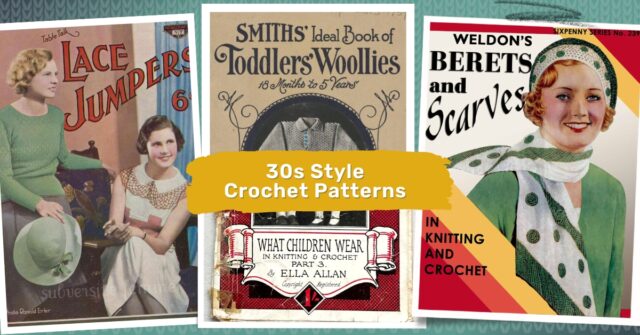
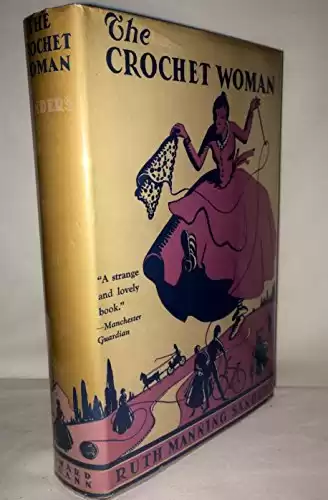
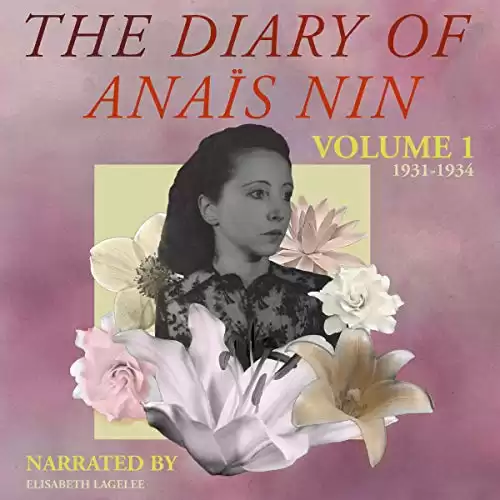
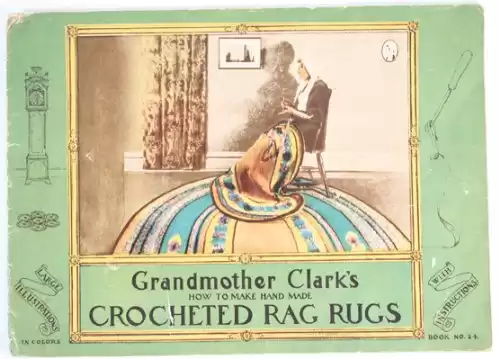
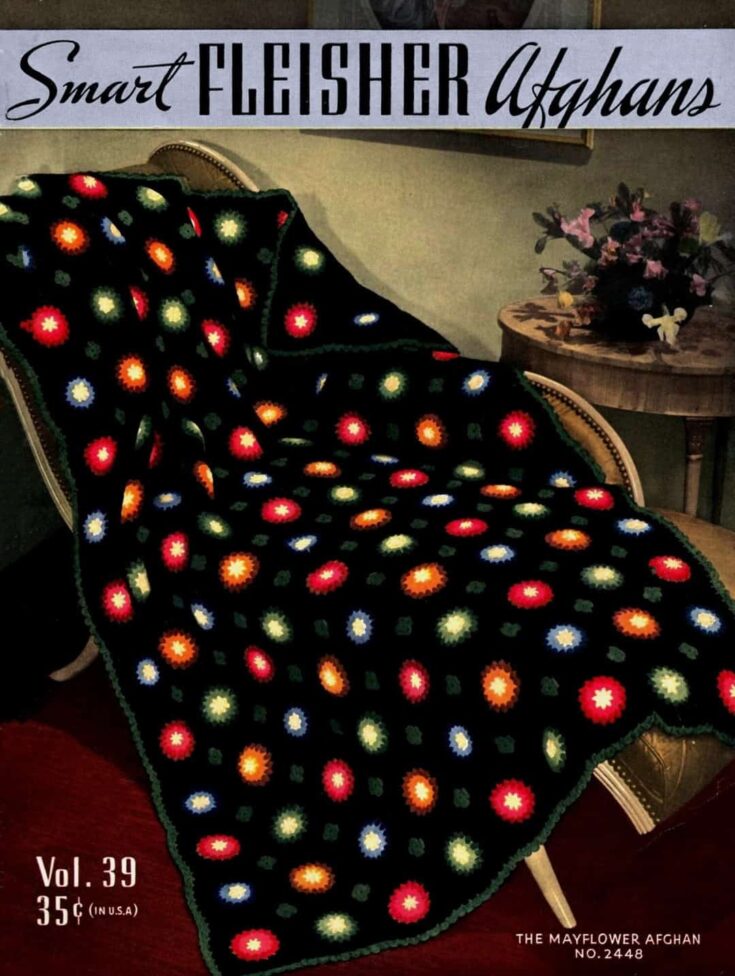
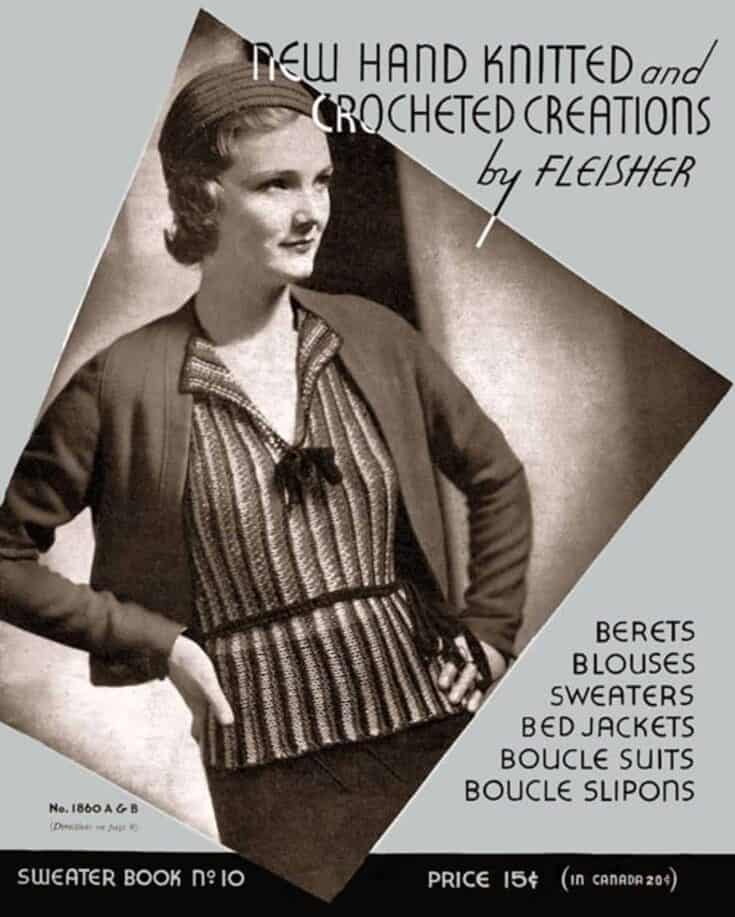
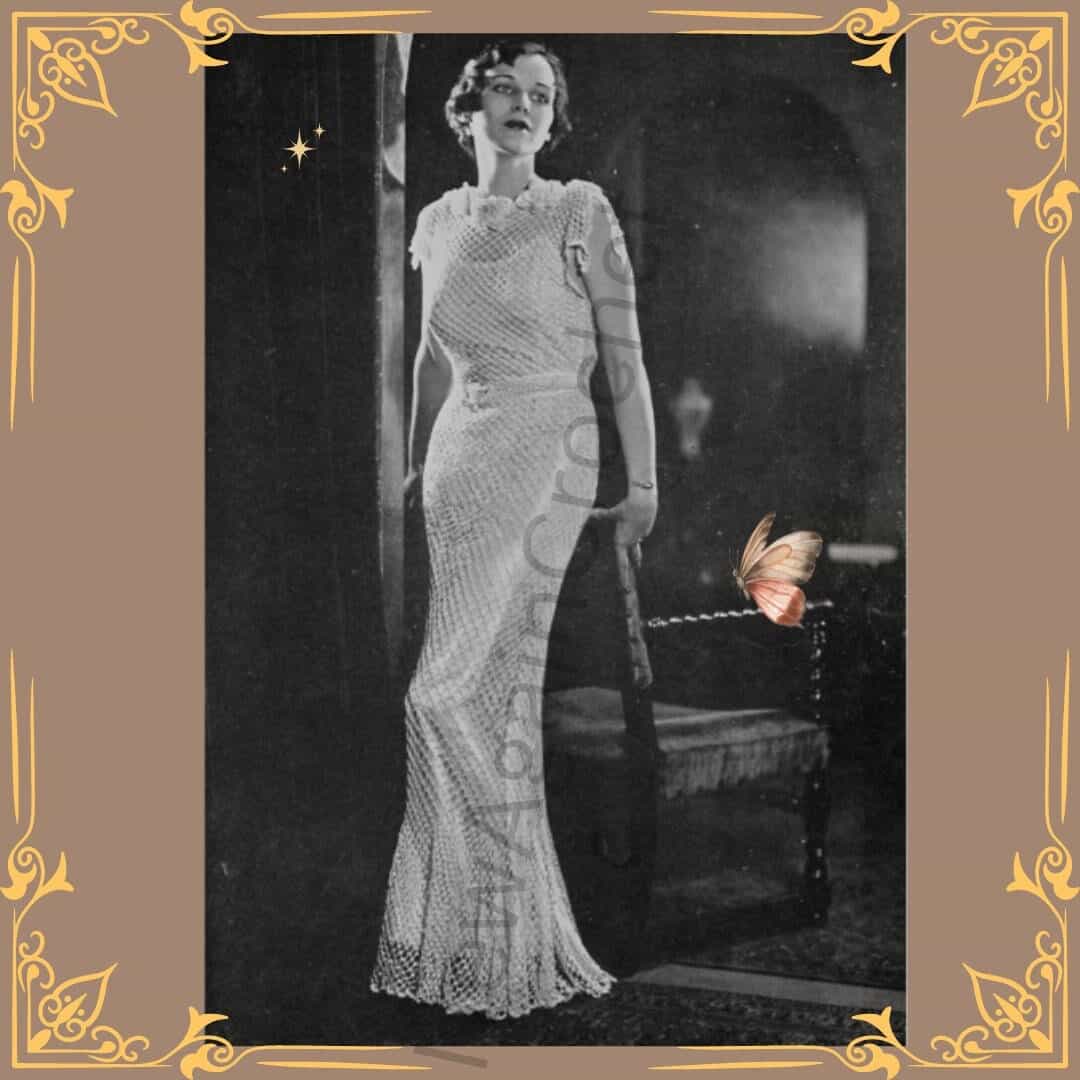
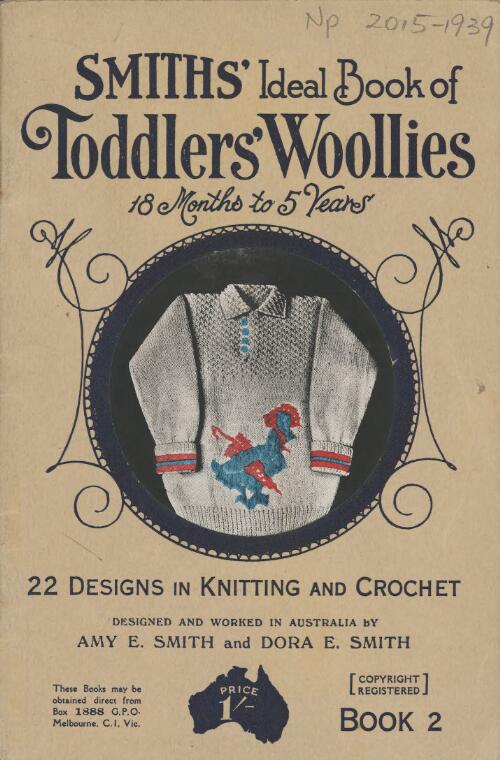
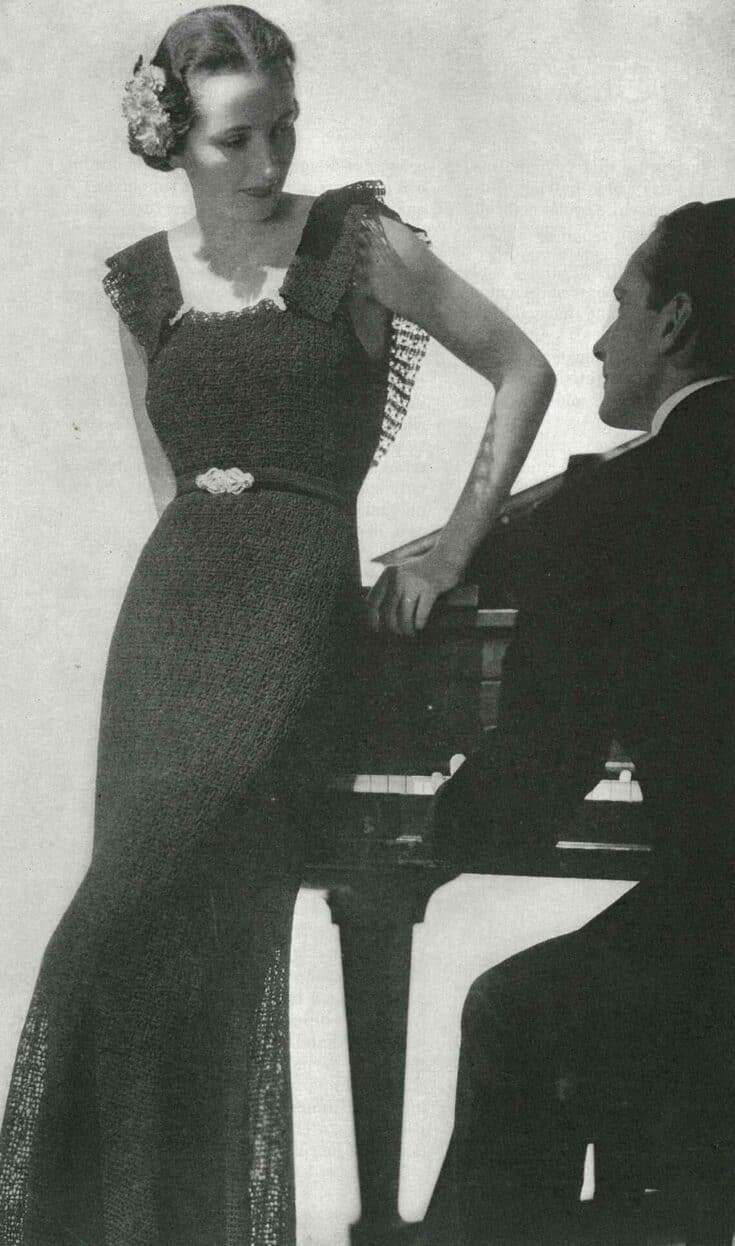
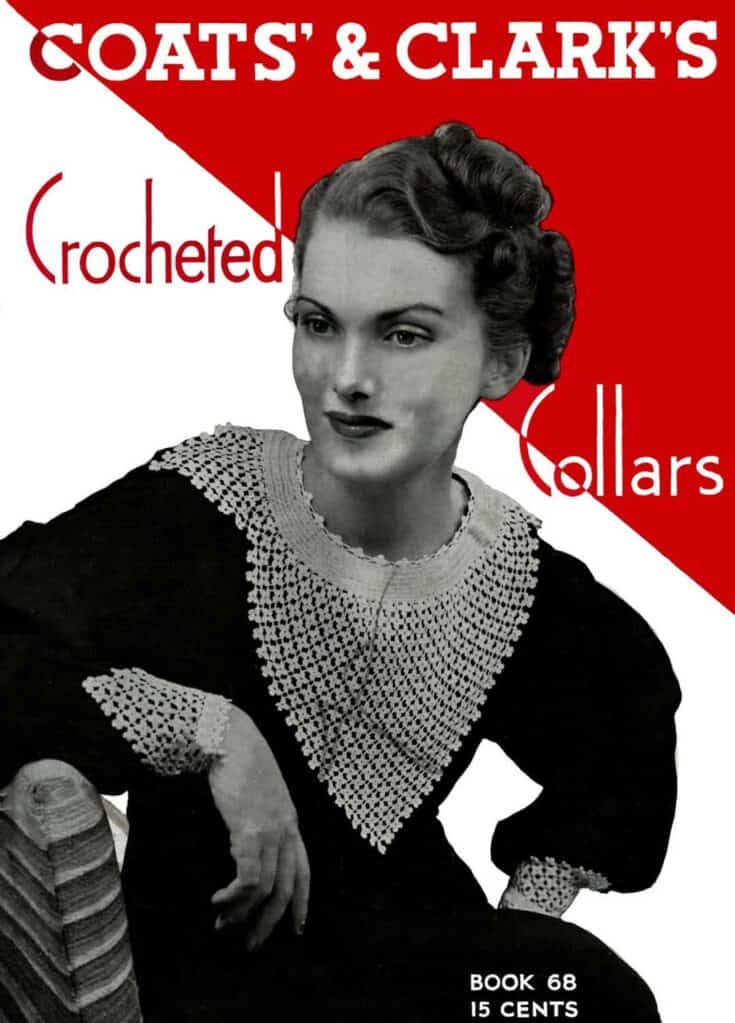
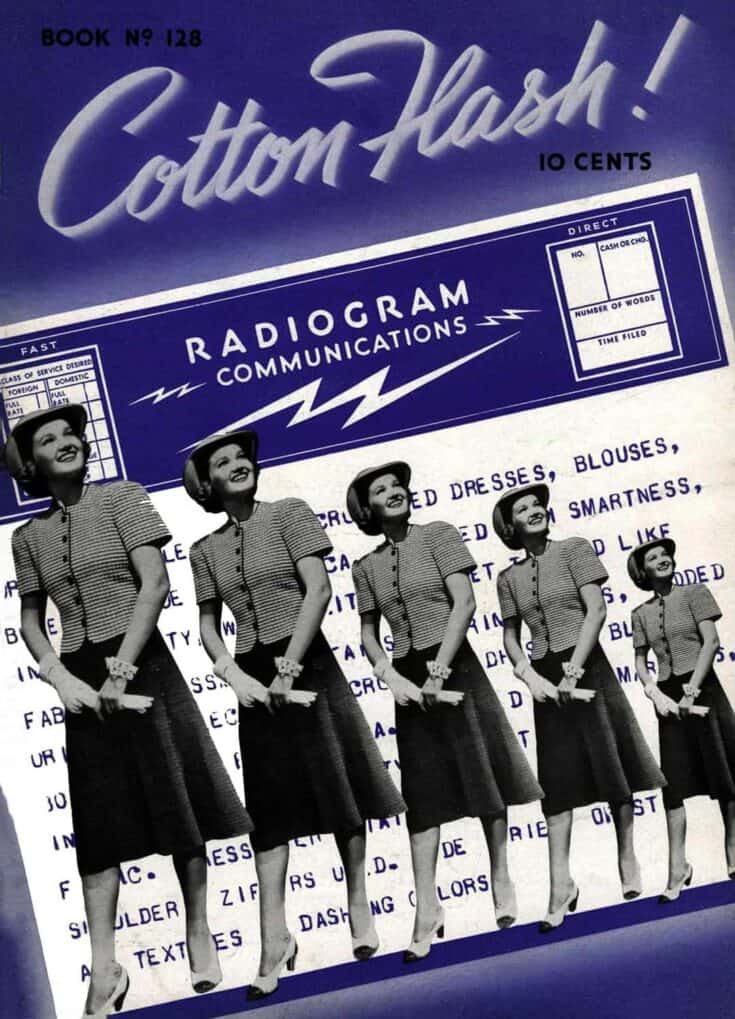
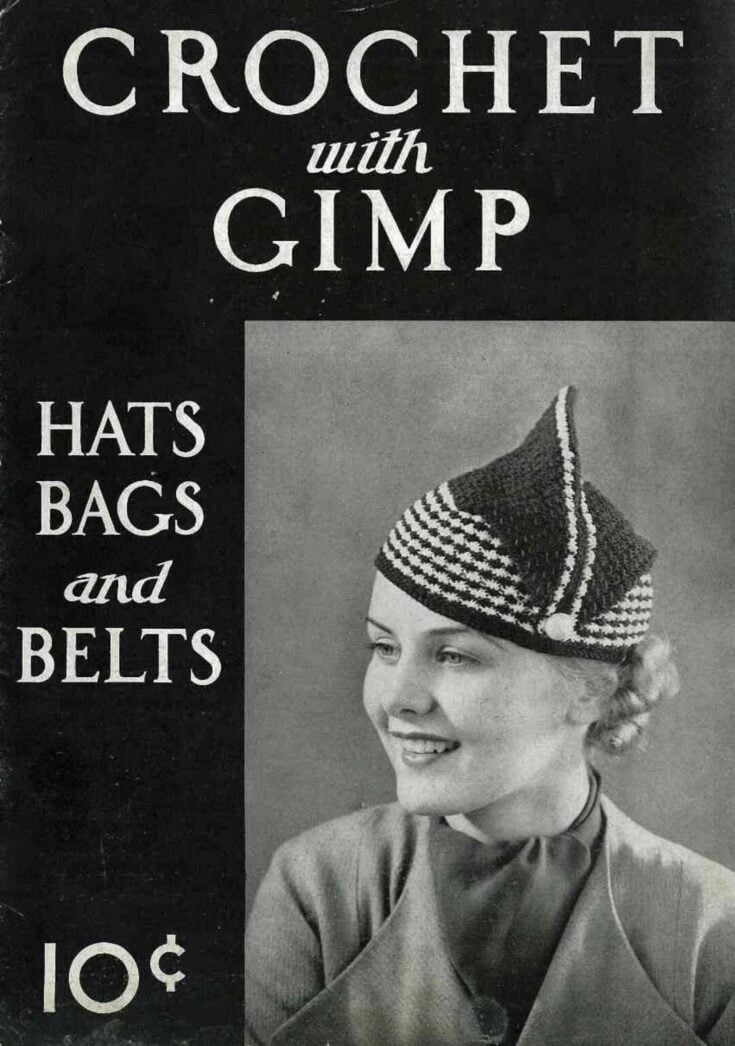
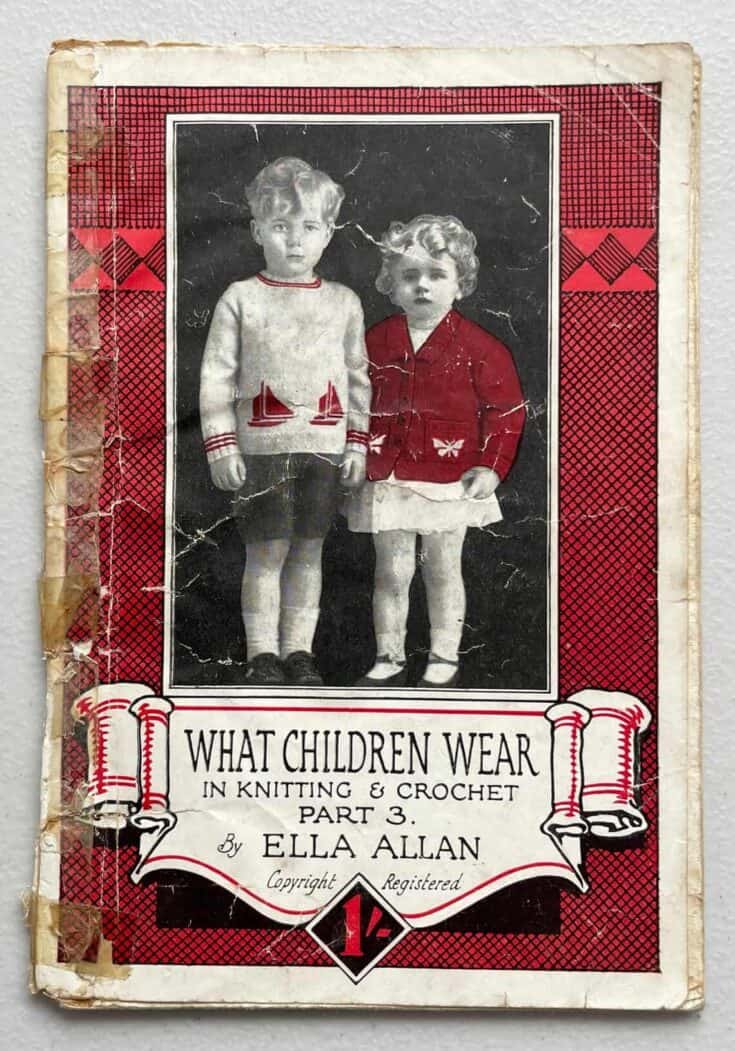

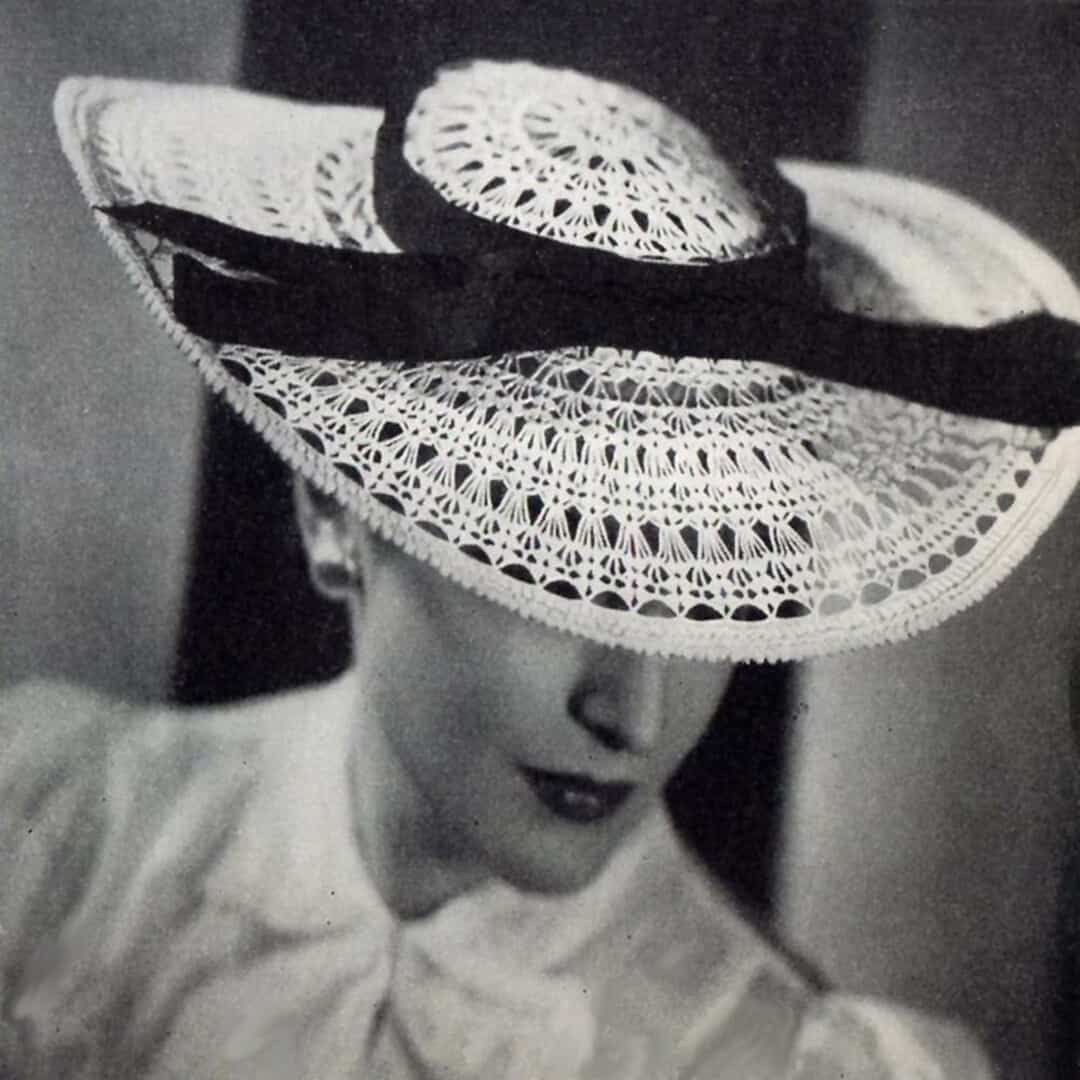
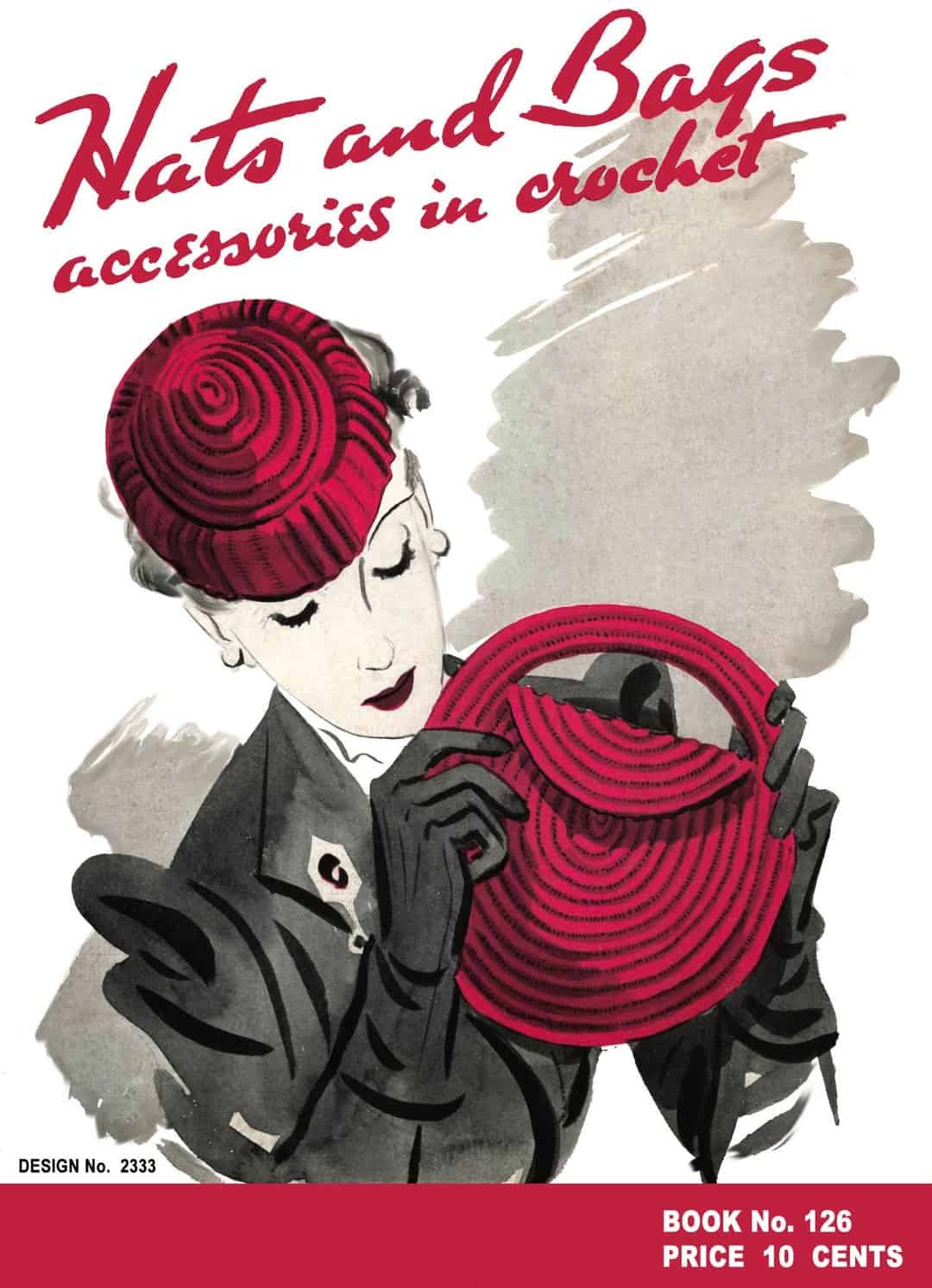

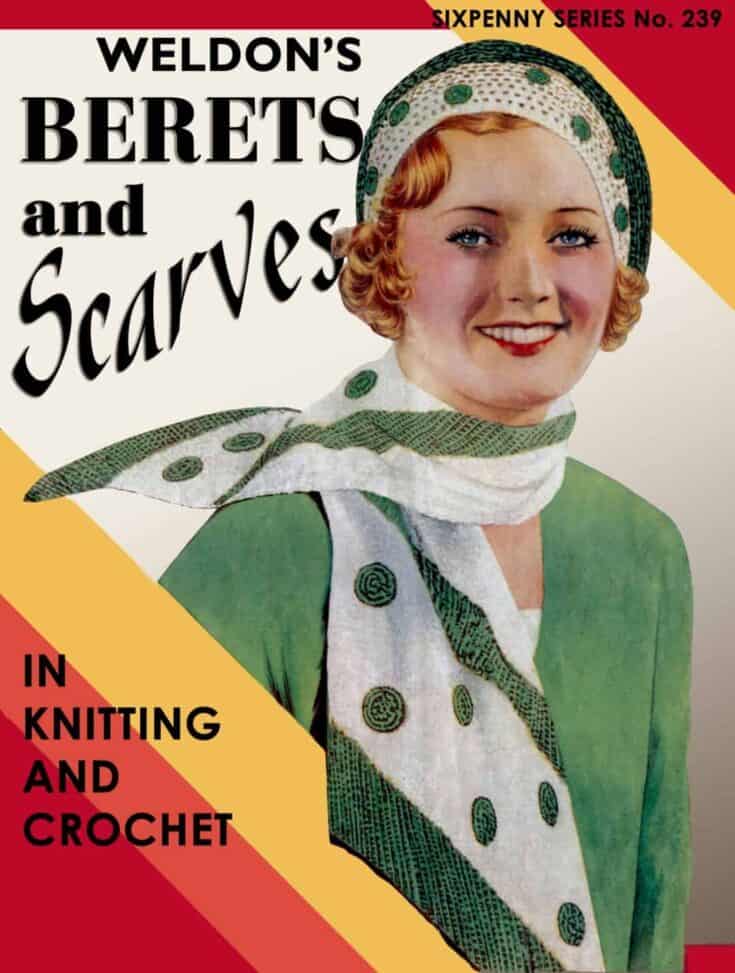
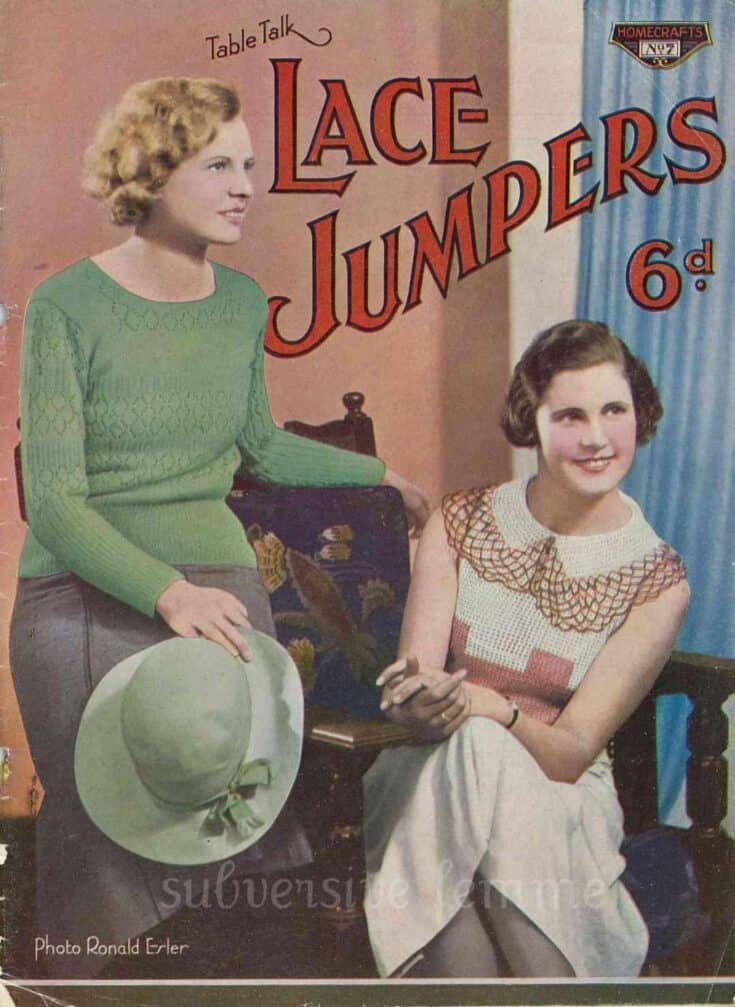
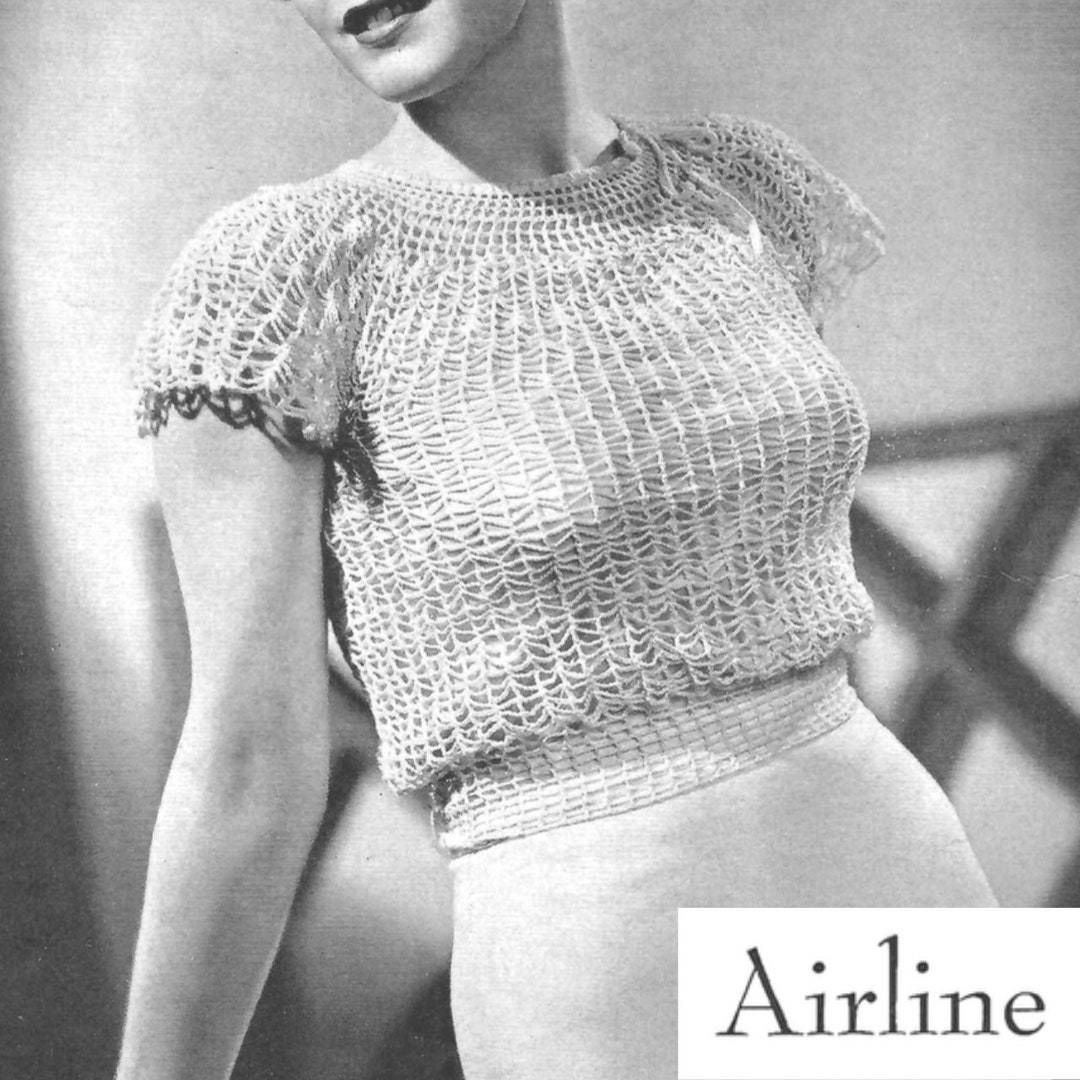
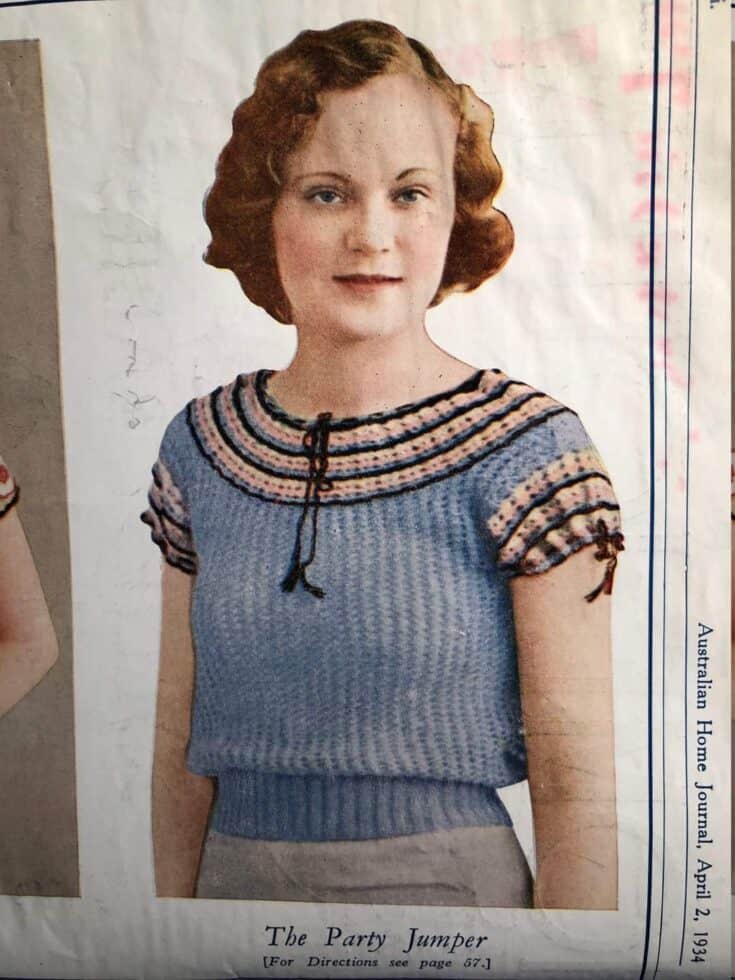
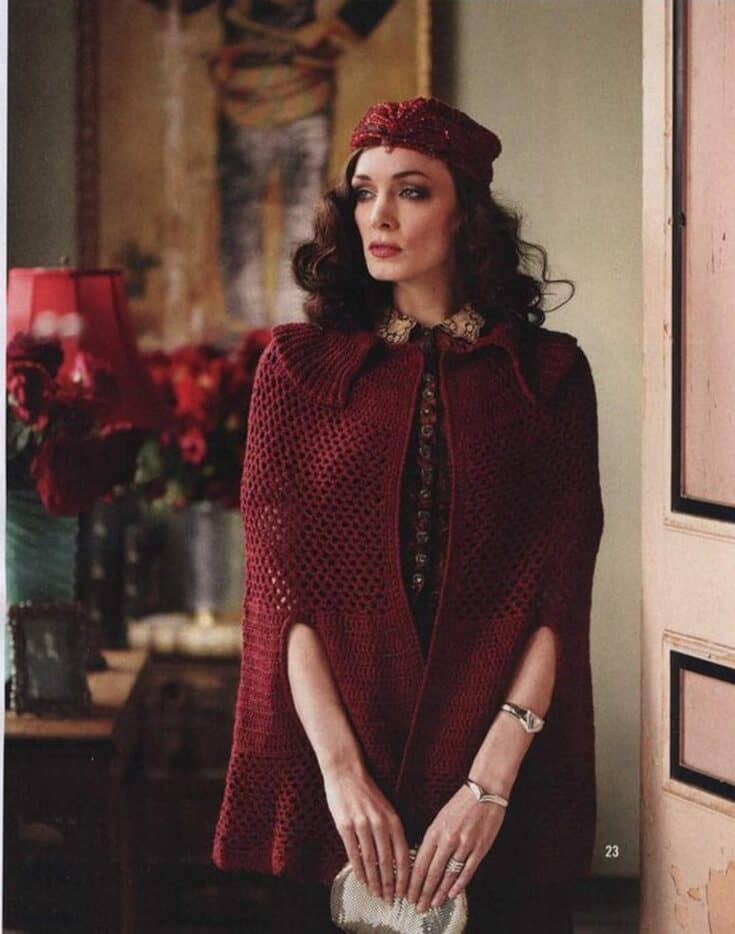
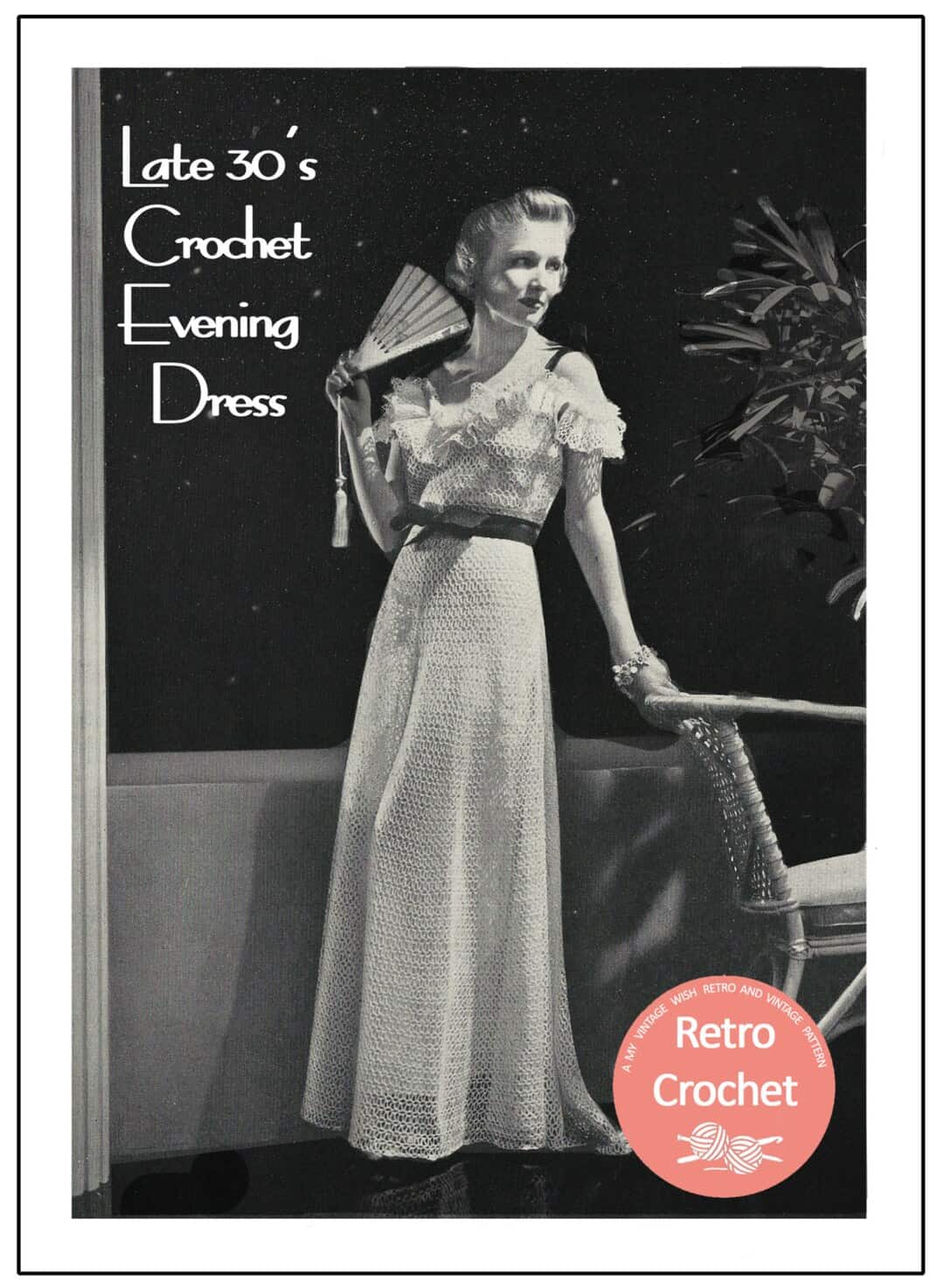
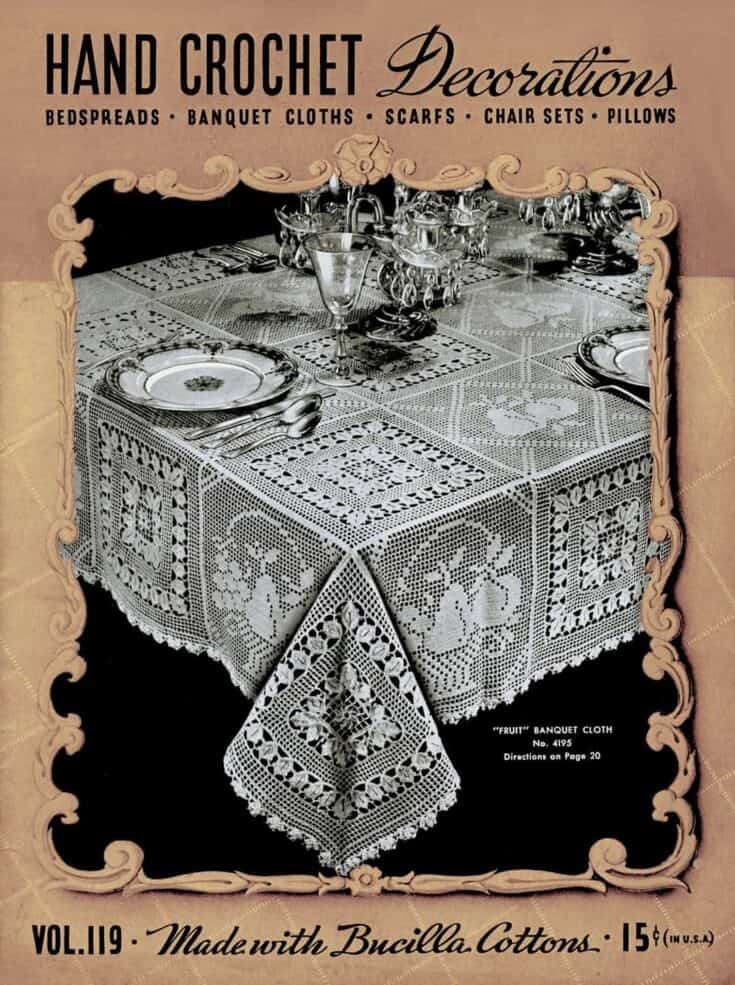
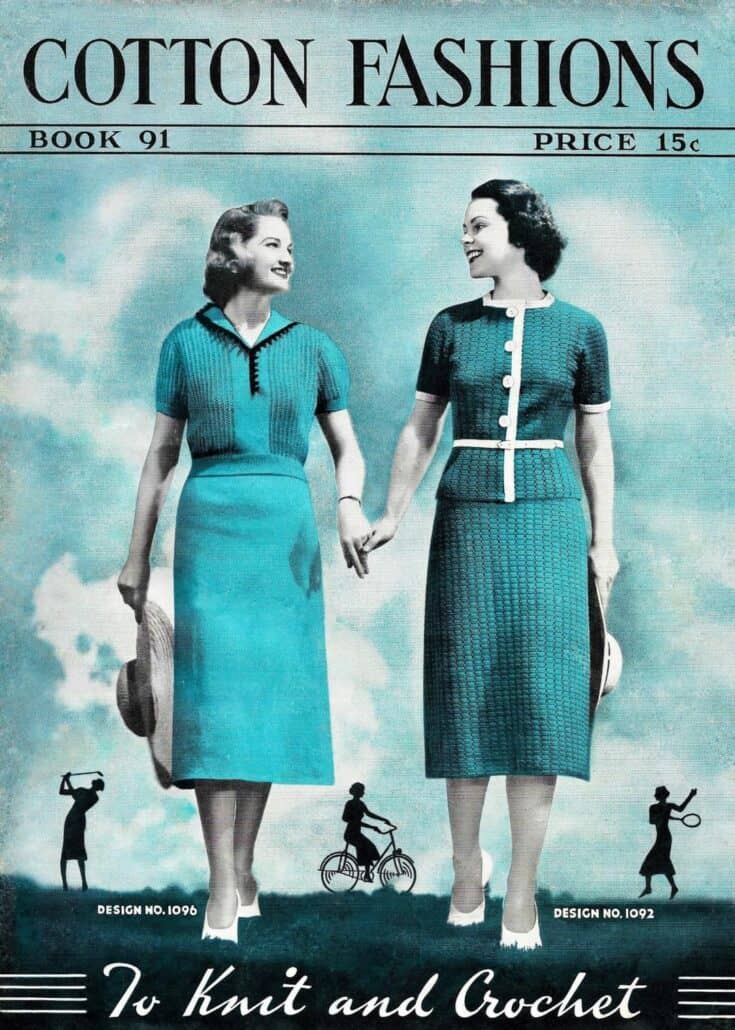
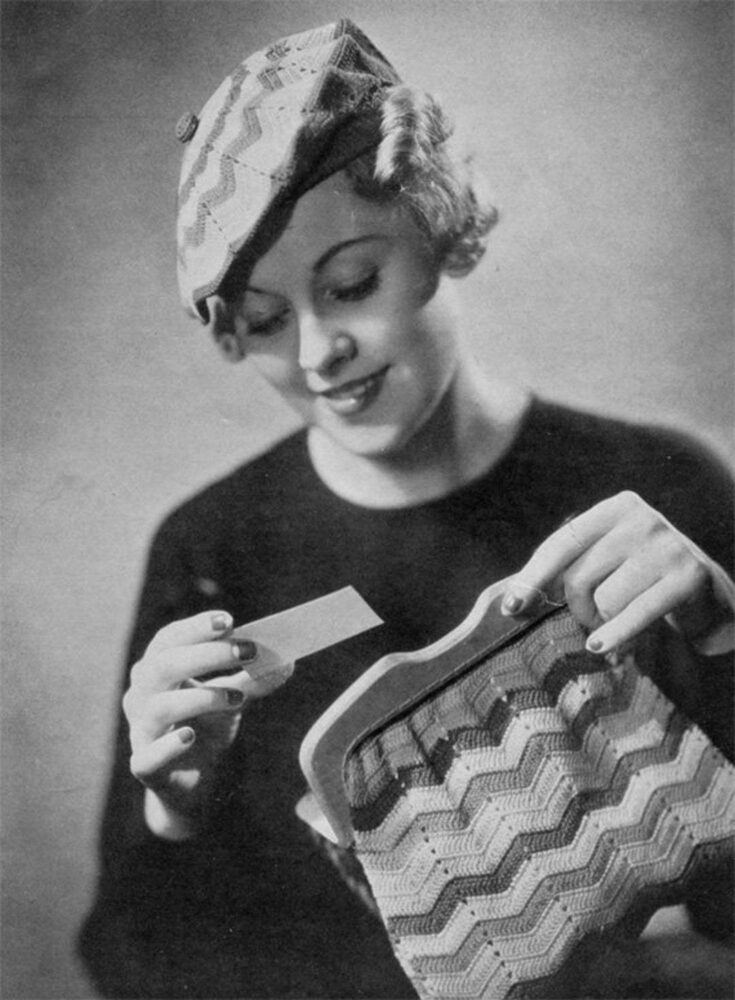
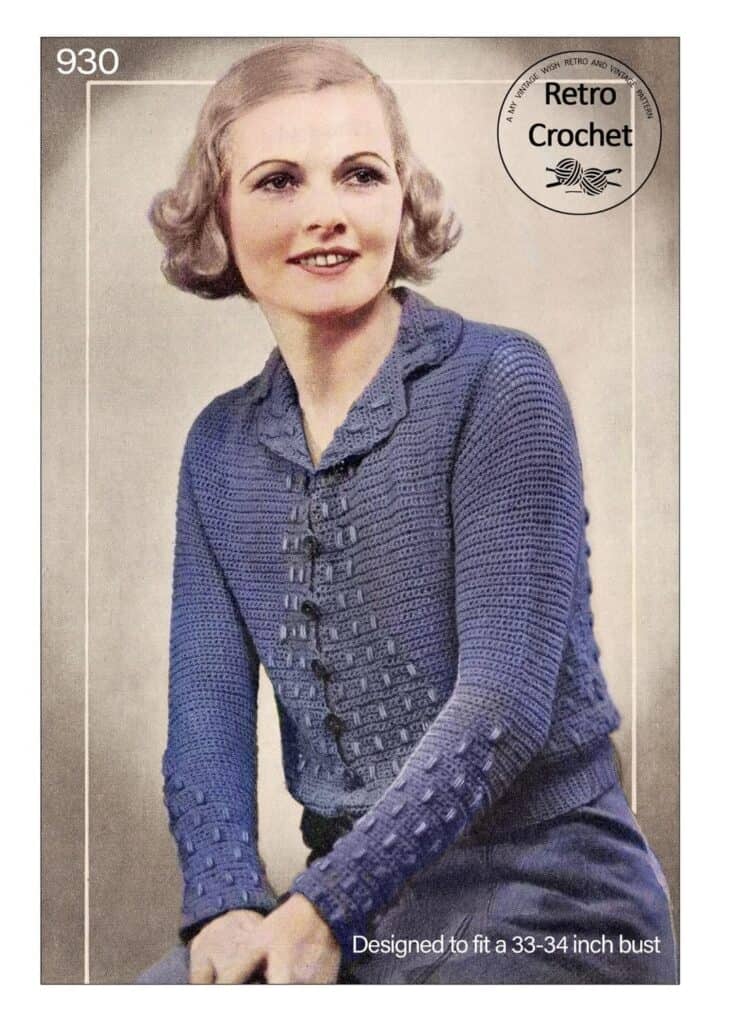
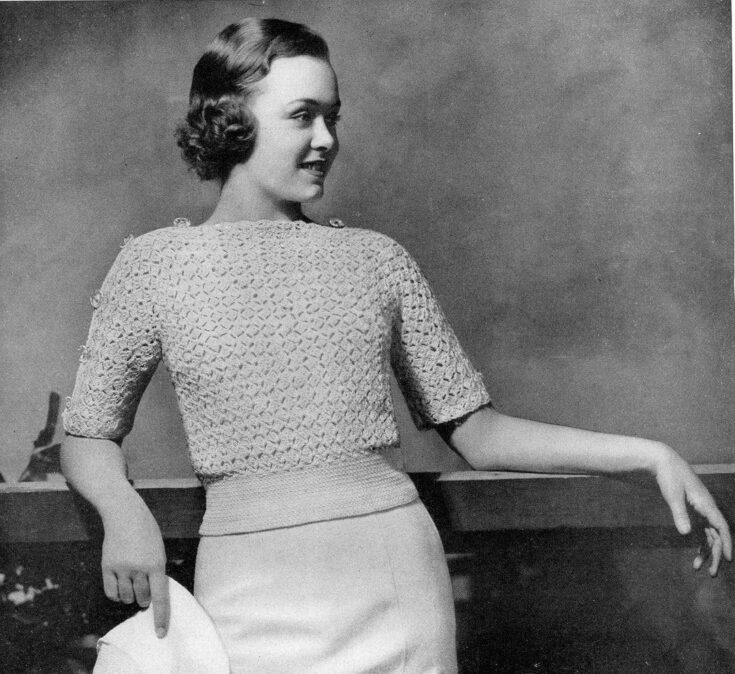
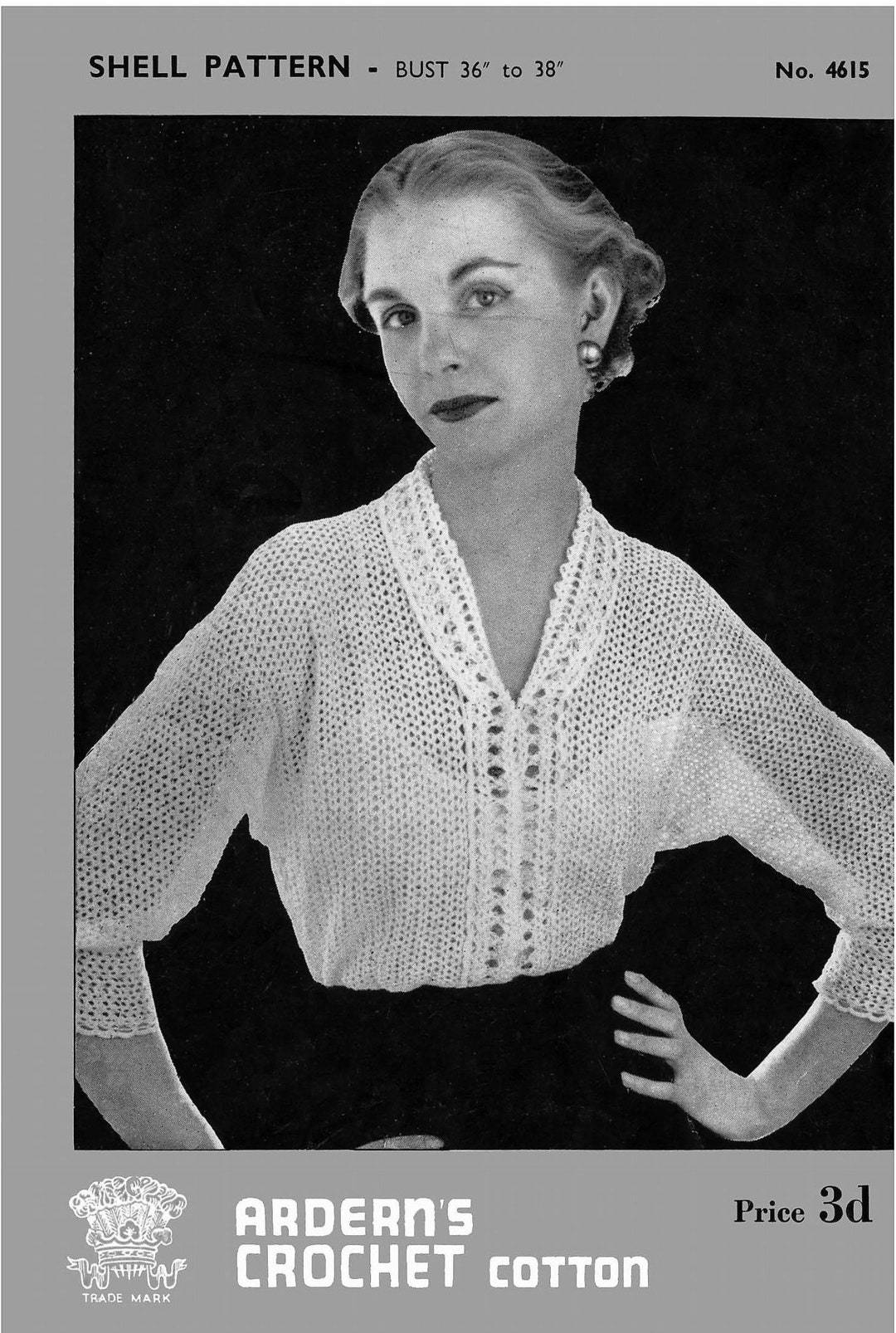
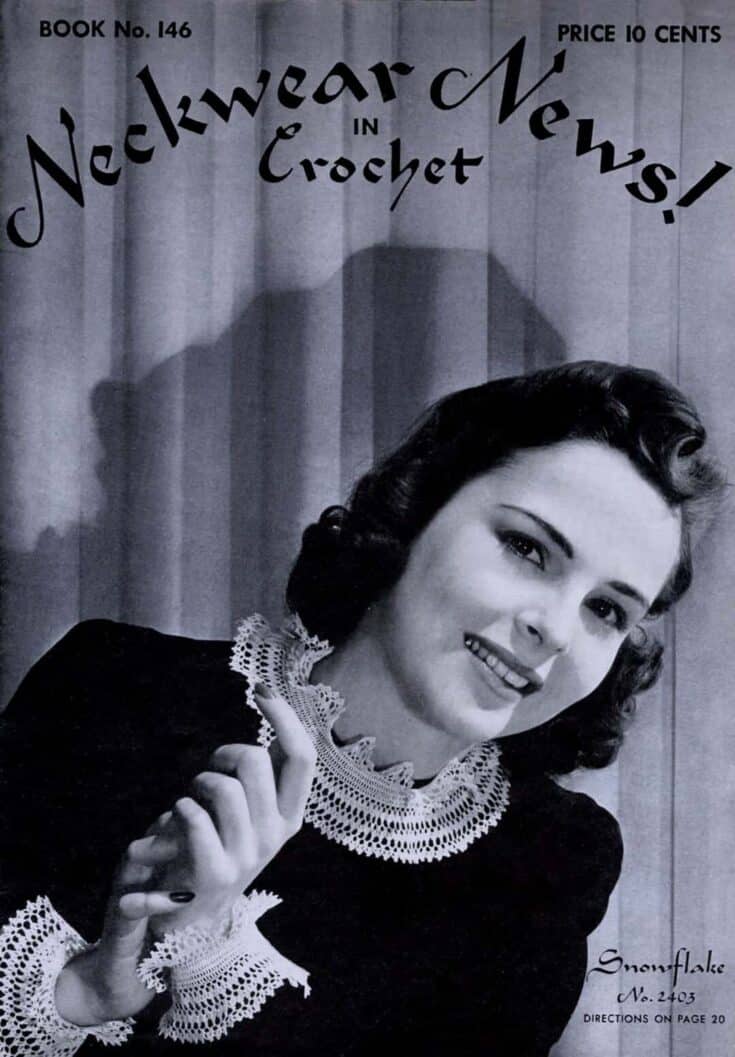
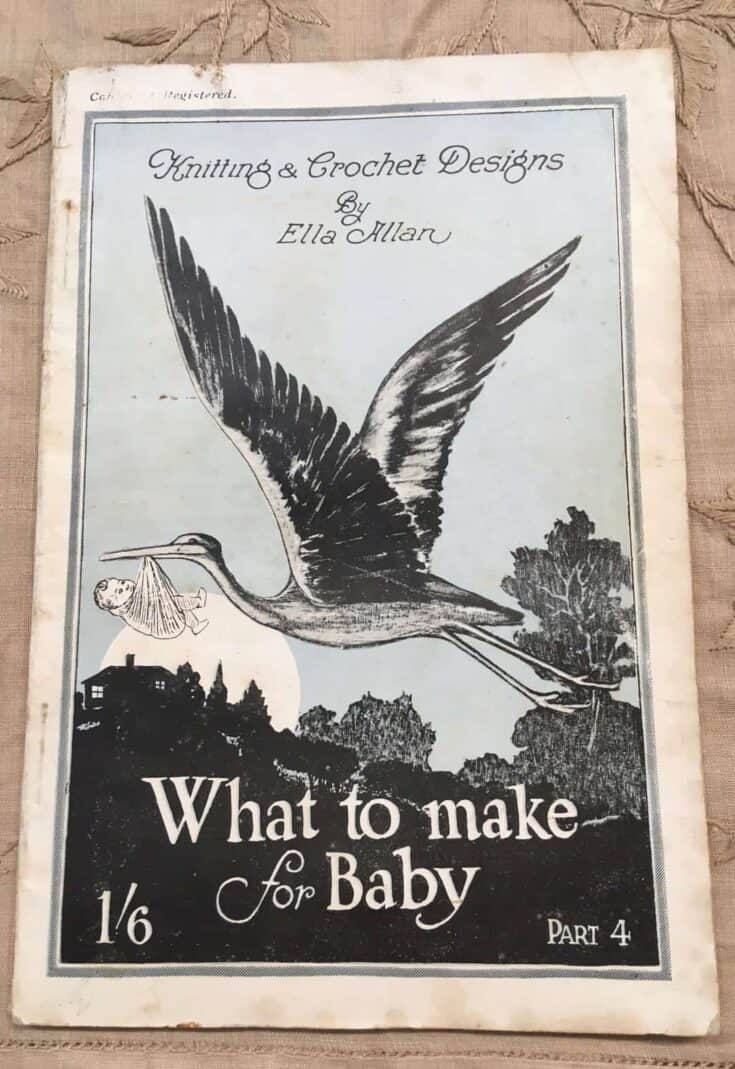
Amazing information you are gathering, Kathryn.
This is so interesting, thanks for taking the time to share. I love history and crochet, so this is real eye and mind candy! I really enjoyed reading this. :-)))
Thanks for gathering all of this interesting history of crochet.
Thank you for collecting and posting all of this great stuff from the ’30s. I dearly love antique crochet and patterns, having learned how to crochet using cotton thread and a fiddly little steel hook (no one told me it was supposed to be hard so I wasn’t intimidated in the slightest). I don’t comment often but love reading all your posts.
Thanks so much for your message! I am so glad that others are appreciating these vintage posts!!
aDORE!
Your posts is absolutely wonderful. So much valuable information. Thank you for sharing. I was trying to find out when they first used cotton to crochet ladies gloves and discovered all of this!
Gostaria de receber receitas de crochet antigo.
Adorei as publicações.